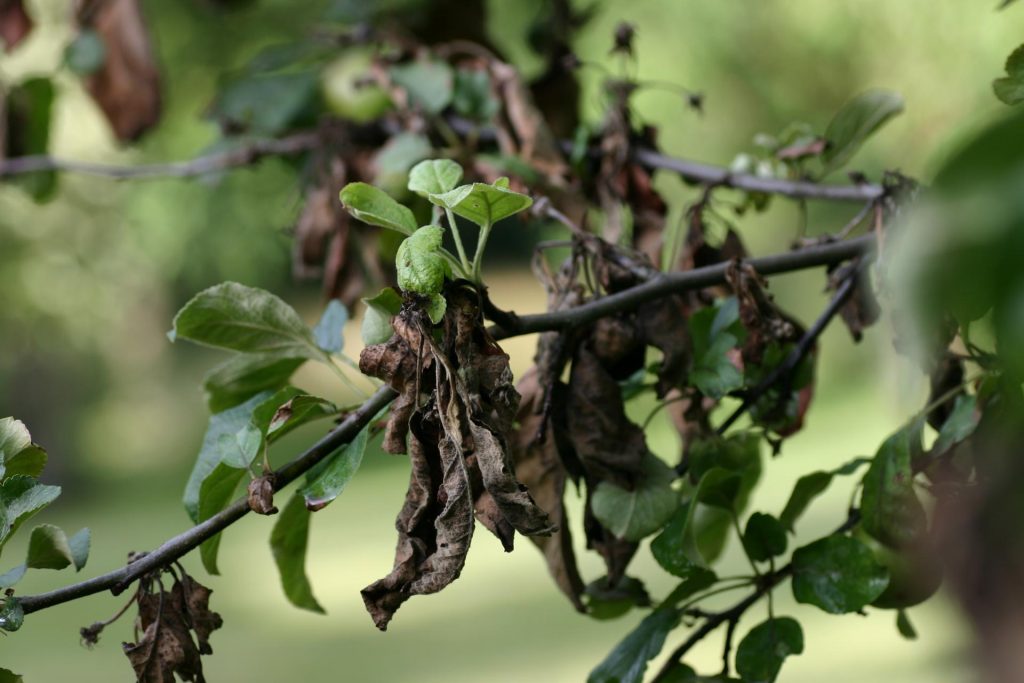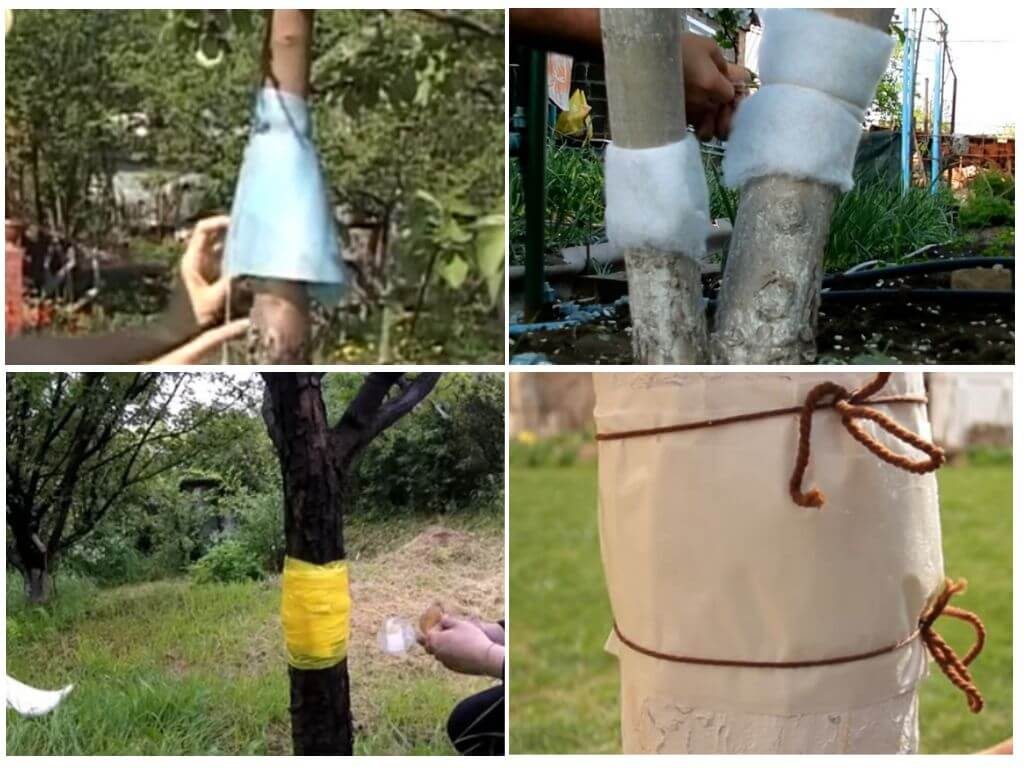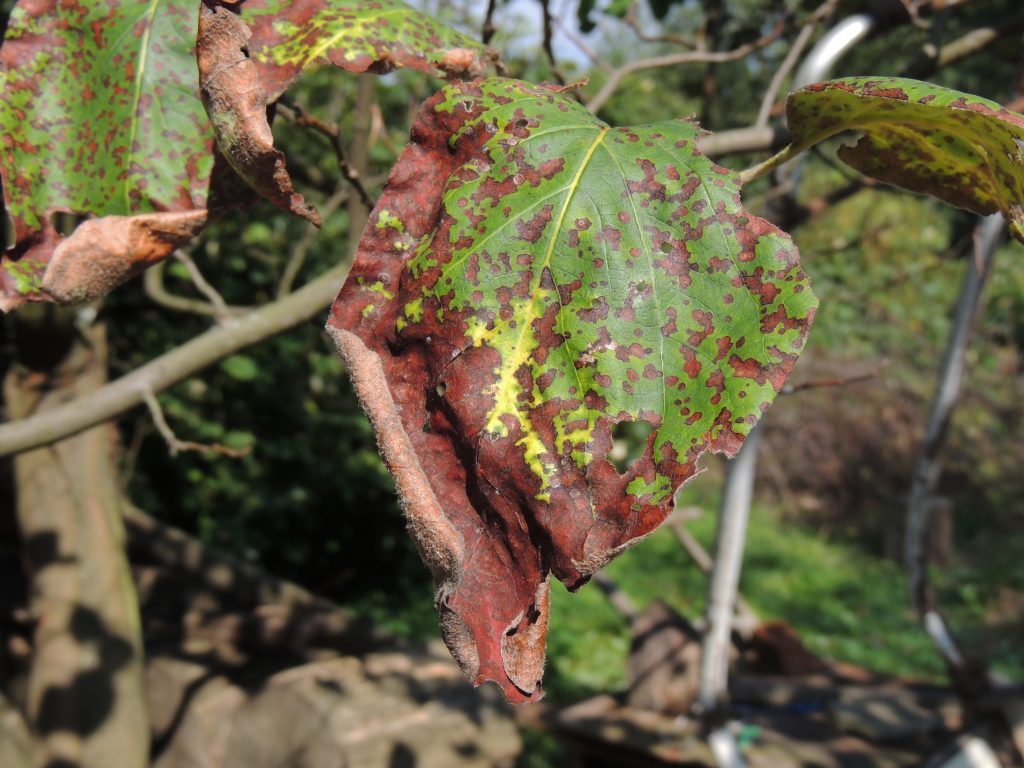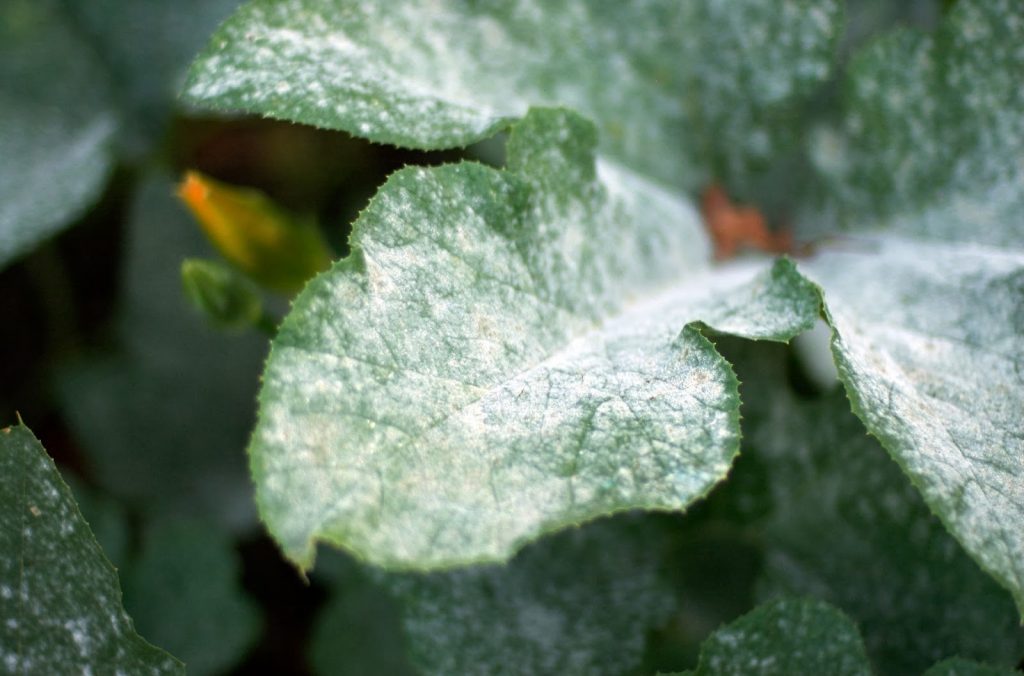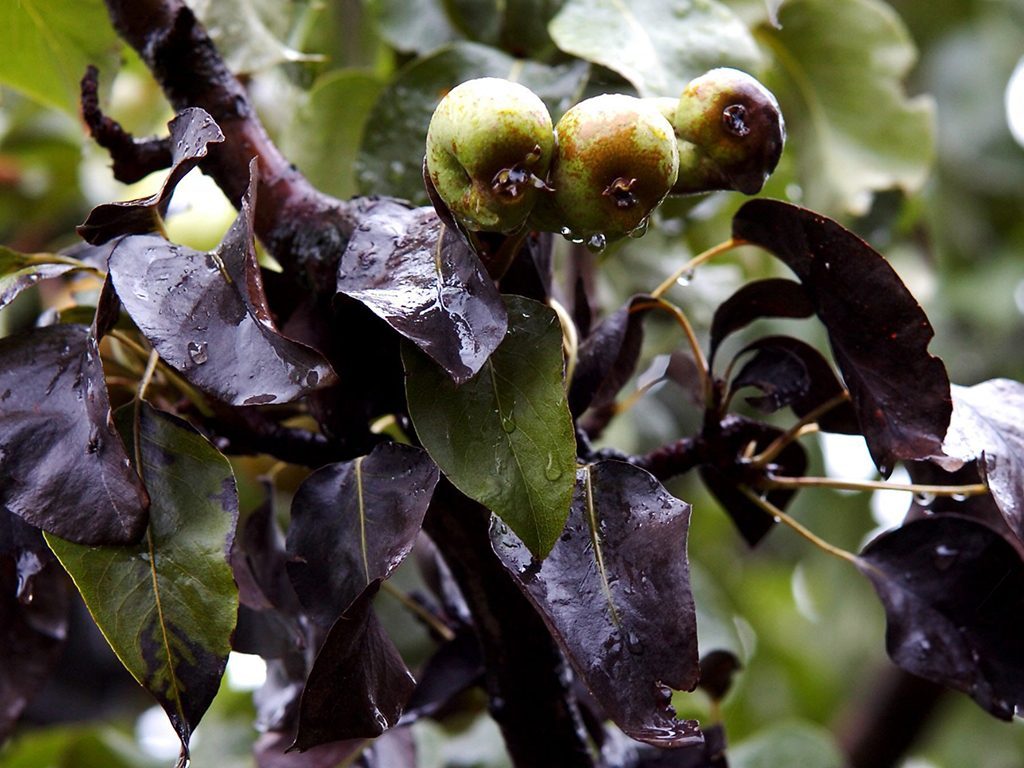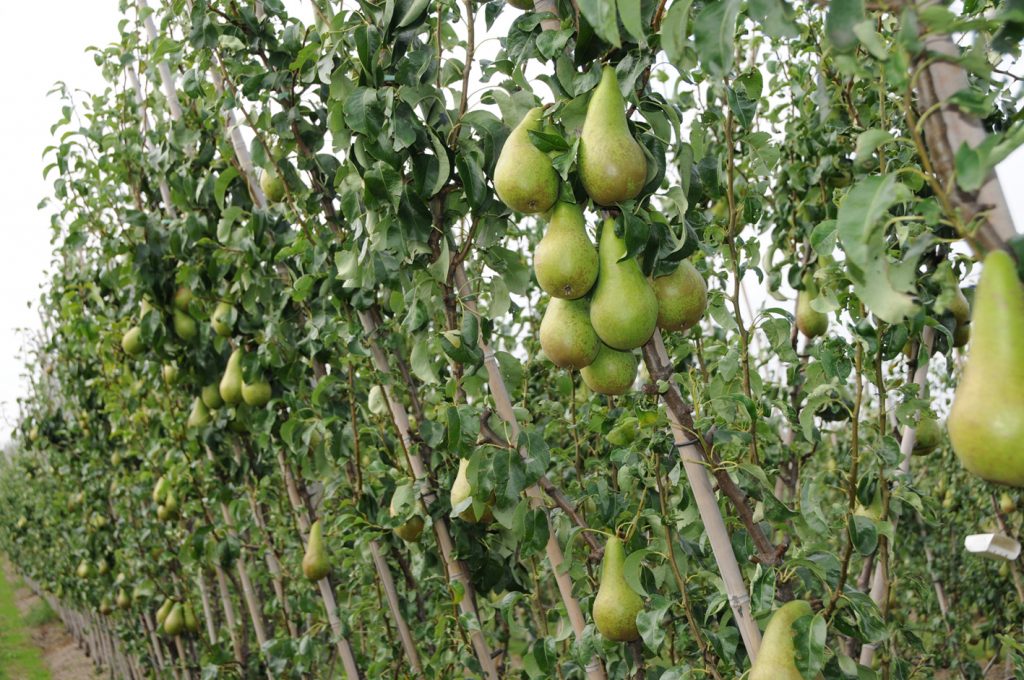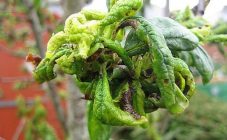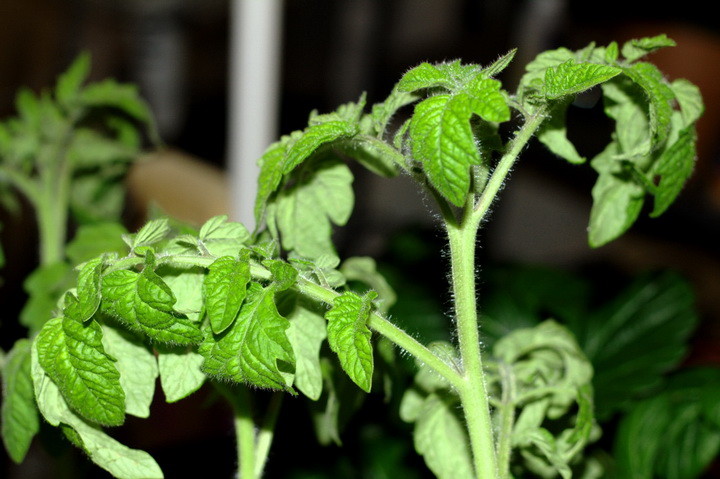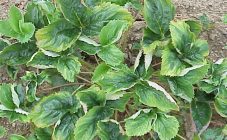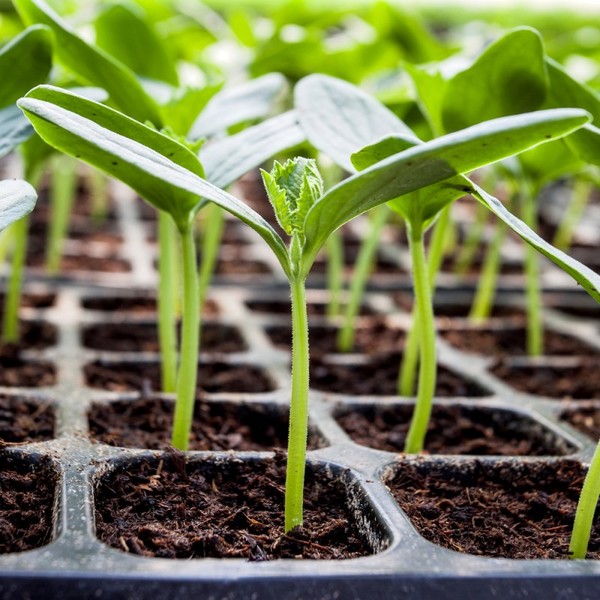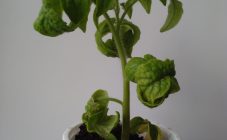Content:
When growing a pear tree, gardeners are often faced with the fact that the leaves can turn black and curl. This phenomenon occurs for a number of reasons. Before processing in order to cure the plant, you should observe the change in the appearance of diseased leaves in order to identify the exact reason why the leaves of the pear curl and turn black.
The causes of the disease
The list of reasons why curling, blackening and leaf fall from a pear tree occurs:
- deficiency of minerals;
- insufficient soil moisture;
- the emergence of foci of pests;
- viral disease;
- bacterial disease;
- fungal disease.
In order to determine as accurately as possible the cause of this phenomenon and understand what to do if the leaves of a pear wither, you should carefully examine each shoot and trunk of the plant. In some cases, a pear can be cured by carrying out standard processing with the use of protective equipment. However, often the tree has to be cut down.
Darkening of the leaves with curling at the apical base can further contribute to calcium deficiency. Lack of boron is accompanied by the same symptoms that provoke the lag in the branches in development. Deficiency of phosphorus and magnesium most of all affects the state of the leaves of the lower layer - changes are expressed in a decrease in the size of leaves, a change in their color and shape, and further abscission. The lack of potassium is determined by the fact that the sheet becomes corrugated, covered with brown stripes, after which it curls and begins to dry out.
In some cases, the cause of this phenomenon is infection. This factor is determined by the fact that no positive changes occur after fertilization. The presence of infection is determined by the furrowing of the trunk, since the crack is a site of harmful bacteria.
Insect damage
Of all the varieties of pests, aphids are most often found on pear trees - often this is the main reason why pear branches turn black and leaves begin to turn brown.
Symptoms that the plant began to hurt due to aphid damage are:
- twisted leaves;
- falling buds;
- loss of ovaries;
- each leaf acquires a brown coating;
- brownish bloom on the shoots.
To destroy aphids, due to which the leaves can twist, and they can turn black, you can use a benzophosphate solution or copper sulfate, diluted in a 10% concentration. However, it should be noted that treatment in this way is effective in the initial stages of infection. In other cases, chemical methods are not used.
A hunting belt, the main component of which is a garden pitch, is used to remove such pests from a garden plot as:
- aphid;
- ant colonies;
- ticks.
To make a trapping belt, a thick layer of polyethylene is wound over the garden varnish and placed, avoiding contact with the surface of the trunk. A hunting belt is installed for the entire season.
Preventive measures against garden pests are:
- loosening the soil in the first spring decade;
- cleaning the trunk from dried bark;
- whitewashing the lower barrel with calcium hydroxide.
Fungal diseases
The scab disease is considered the most dangerous for plants, since it can lead to the loss of all plantings on the site. Most often, a tree or seedling is affected by scab in warm and humid conditions.
The first symptoms of scab disease appear after the buds open. External signs of scab are the appearance of small spots of yellow color on the leaves, the color of which becomes brown. In addition, when affected by a fungal infection, the foliage becomes red, after which it becomes black and falls off. When the scab lesion passes over to ripening pears, they develop more slowly, and their shape is noticeably deformed.
Scab disease is a consequence of the rapid multiplication of the fungus, the original habitat of which is fallen leaves. Refusal to harvest them in autumn will lead to the appearance of small dark bumps on the leaves, which are the focus of spore reproduction. Scab spores fall on the tree during its transition to the flowering stage and the subsequent development of buds. The degree of damage depends on the temperature regime established during this period. In warm weather, the rate of spread of spores on leaves increases significantly.
Sooty fungus disease
Sooty fungus is another reason for the blackening of the leaves on the pear tree. The appearance of the infected leaf is distinguished by the presence of a black bloom, which manifests itself by the middle of summer, which resembles soot.
Young plantings with weak immunity, prone to diseases with various diseases and unresistant to parasitic insects, are most susceptible to sooty fungus.
Parasitic insects such as aphids are able to secrete a substance of sugar consistency, which serves as a suitable breeding ground for the sooty fungus.
In addition, this substance damages the structure of the tree bark, which allows soot fungus to penetrate into the tree through cracks. Since the plant's immunity is weakened due to the influence of parasites, the planting is not able to fight the infection.
The wintering site for sooty fungus spores is a tree trunk or fallen leaves. With the onset of the spring season, the infection continues to spread.
As a prophylactic agent, with the help of which it is possible to cure the defeat of the sooty fungus, the insecticidal preparation "Calypso" is used, which destroys the insects that carry the spores of this disease. The use of Fitover fungicide is aimed at curbing the spread of fungal infection.
Powdery mildew disease
Spores of marsupials are carriers of powdery mildew. At an early stage, this disease manifests itself with a certain difference from other fungal diseases - young leaves on pears are initially covered with a white coating.
Further, the white bloom acquires a reddish tint, after which it becomes black. The blackened leaves wither and begin to fall off.
Young shoots are least resistant to powdery mildew.
The most effective way to combat this disease is to remove dead and diseased branches. In order to prevent the spread of powdery mildew to the rest of the plantings, plant residues are burned. From time to time it is recommended to treat pear trees with "Fundazol" and "Sulfite".
In addition, you can fight powdery mildew with folk remedies.
For this, a solution is made in the amount of 10 liters, which includes the following components:
- soda ash (50 grams);
- liquid soap (10 grams).
It is also possible to carry out the treatment by spraying the pear tree with a potassium permanganate solution in 1% concentration.
Infection with bacteria
A bacterial burn is an equally common cause of blackening and curling of leaves. The period of the most intense activity of this disease is the days of hot rainy weather. At the first stage of the lesion, the young ovary and peduncles are deformed - this consists in wilting and subsequent shedding of the infected leaves.
The next stage in the development of a fire blight is expressed by blackening and twisting of the leaves. The beginning of this process is difficult to notice, since the initial place of its occurrence is the apical part of the leaf. Further, the lesion is transferred to the rest of the leaf surface. The infected greenery dries up rapidly, after which it can curl up in a very short time.
Treatment and prevention methods
The danger of the spread of diseases lies in the fact that all garden trees may die, and not one planting. It is necessary to start treating any disease when the first signs of its occurrence appear.
Processing, how to treat when the leaves on the pear turn black, is as follows:
- Prepare a canister made of plastic material.
- Place the canister next to the tree.
- Take a plastic container.
- Dissolve 1 tablespoon of copper sulfate in 20 liters of water.
- Fill the canister with the prepared solution.
- Use a sturdy cotton fabric.
- Cut 10 cm strips from woven fabric.
- Wrap the barrel with strips of fabric along the entire length.
- Place the tip of the strip in a container with vitriol solution.
- Prepare a plastic bottle.
- Pour some of the solution into the bottle.
- Hang the bottle on the upper branches of the tree.
Every week, the solution in the bottle container must be replaced with a new one. The duration of treatment is the entire horticultural season - from the beginning of warming (early spring) until the beginning of the calendar winter.
The solution should be replaced in the following order:
- zinc;
- copper;
- potassium sulfate;
- iron based.
Simultaneously with the treatment with the solution, it is recommended to spray the pear tree every 5 days from the moment it begins to bloom, using one of the antibiotics:
- Thiomycin;
- Penicillin;
- Agrimycin.
Preventive measures
Spraying trees with medicinal preparations such as copper sulphate solution or Bordeaux liquid helps to increase disease resistance. When the first symptoms of a bacterial burn appear, diseased branches should be removed immediately. The cut length is 20 centimeters from the burn. Plant residues in the form of cut branches are to be burned.
Cutting down a diseased tree is considered the most effective way to secure a garden plot.
It is best to carry out a number of preventive measures immediately after planting the pear, aimed at preventing any of the listed diseases. Treatment is best done with proven chemicals.
The occurrence of such a symptom, when the leaves on the pear turn black, and also undergo deformation, can occur for several reasons. Many diseases pose a danger not only for one, including a young, planting, but also for the whole garden plot. That is why it is necessary to identify the disease as early as possible and take the necessary measures to process or cut down the diseased plant.However, you need to know when the leaves on the pear turn black and curl how to treat this disease, so as not to harm the tree, using unsuitable preparations or components of organic origin.
